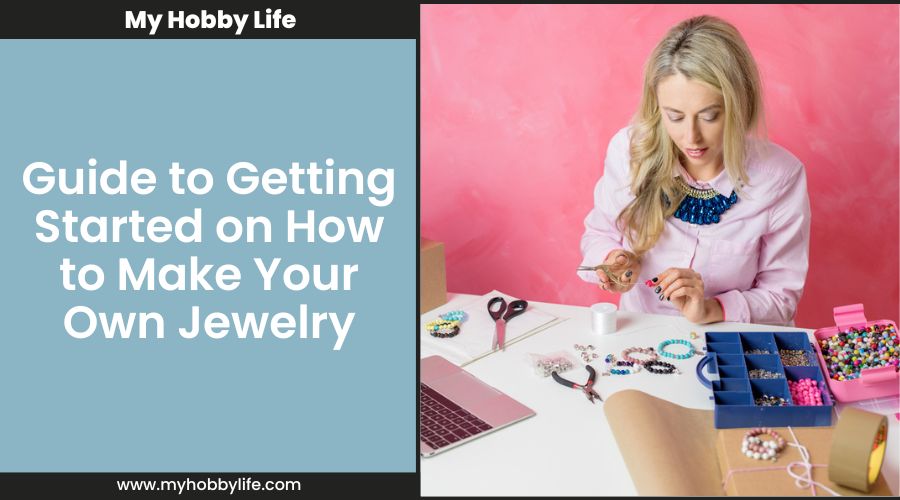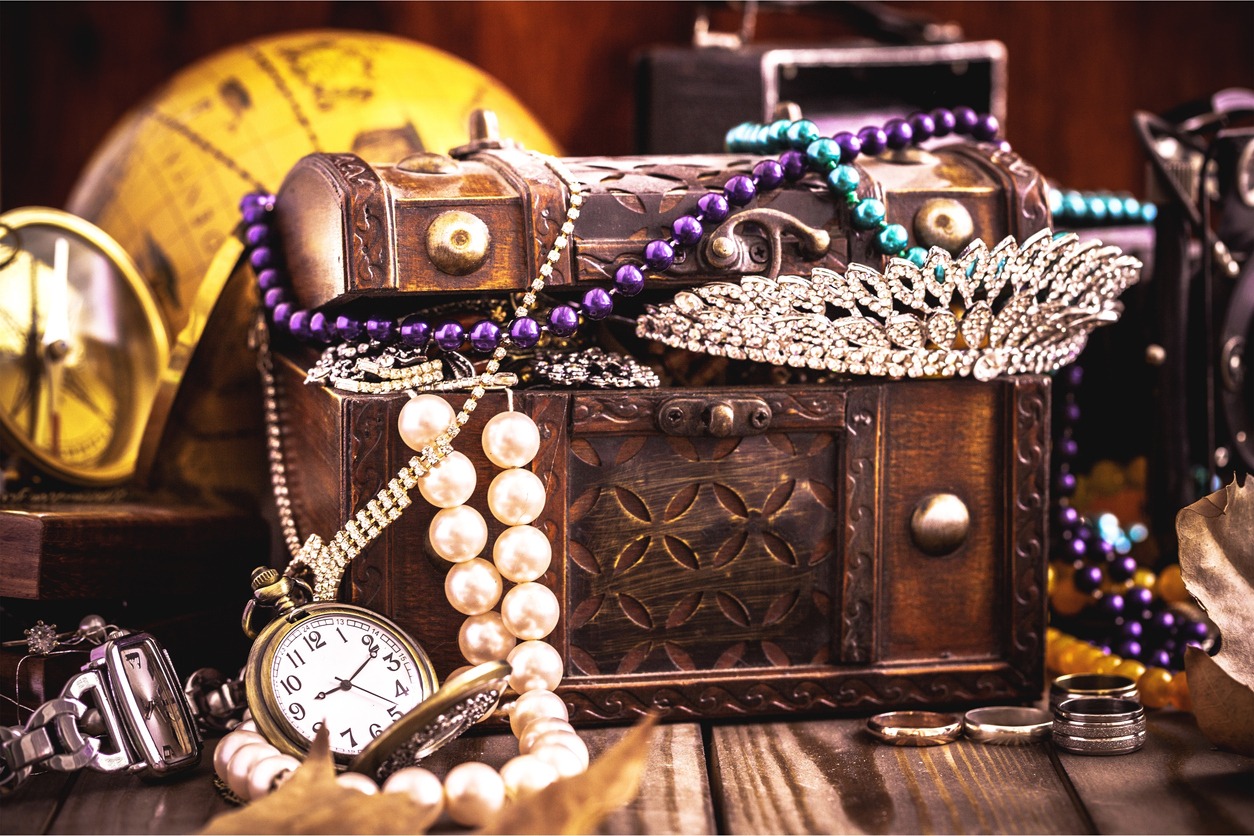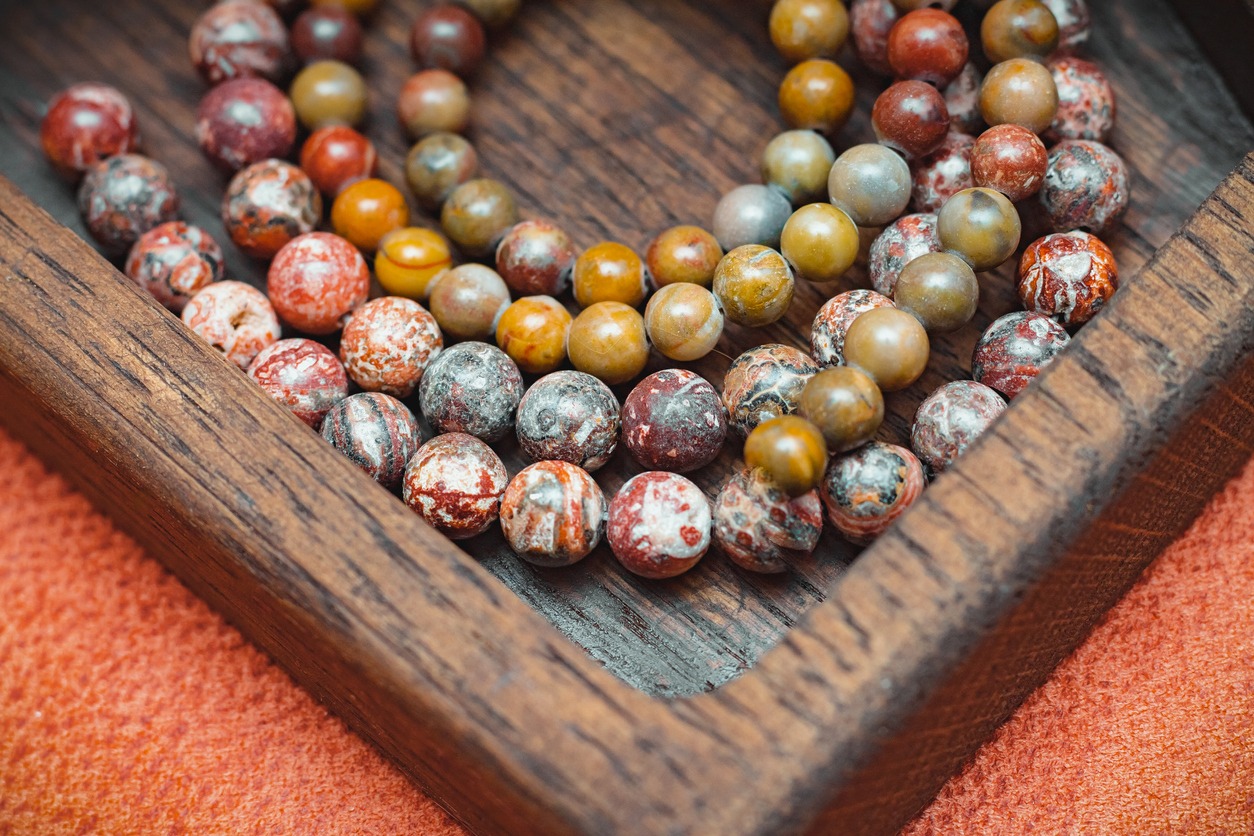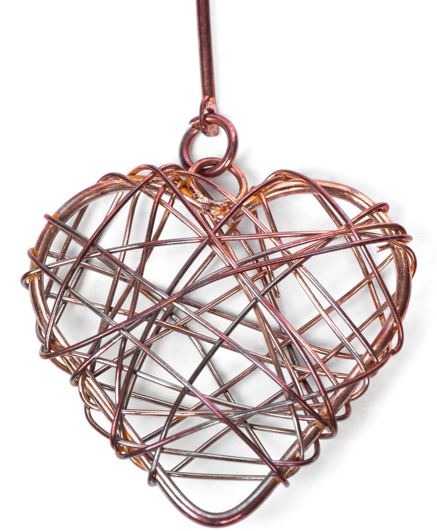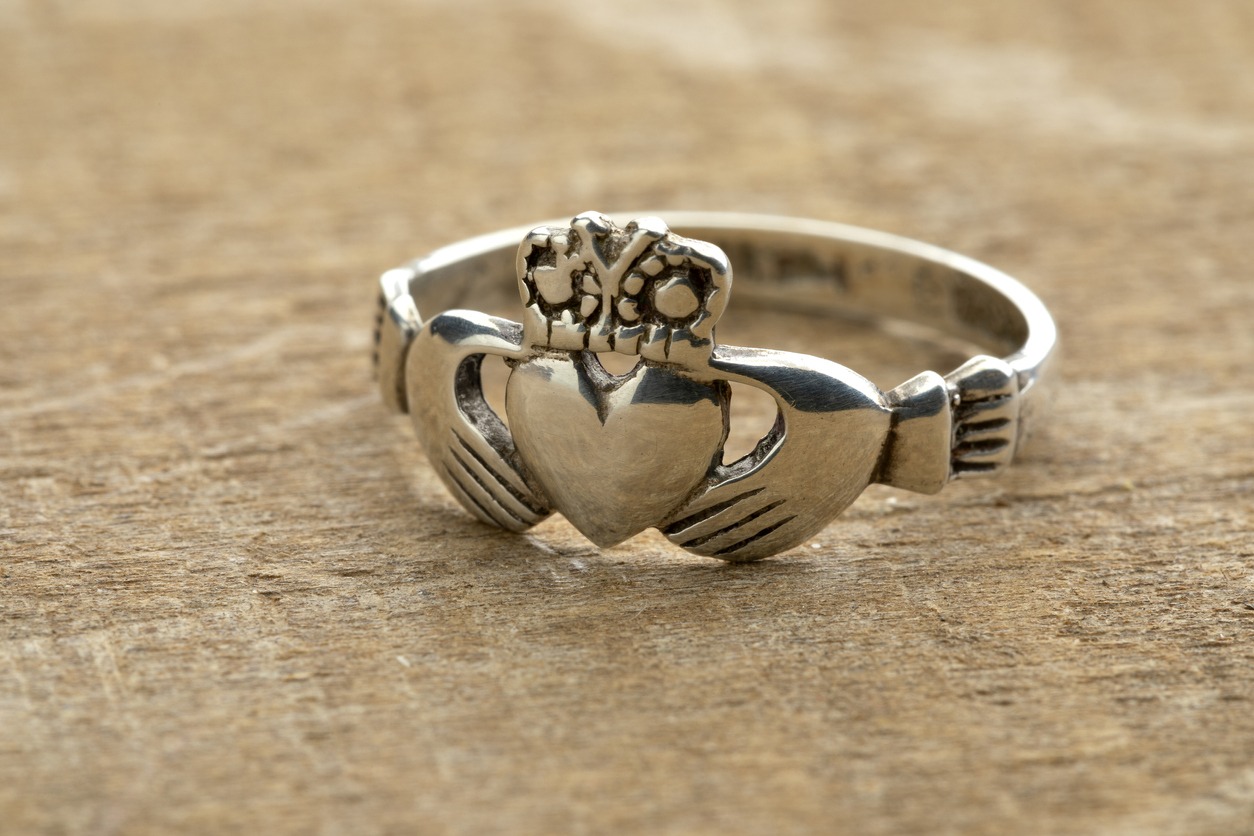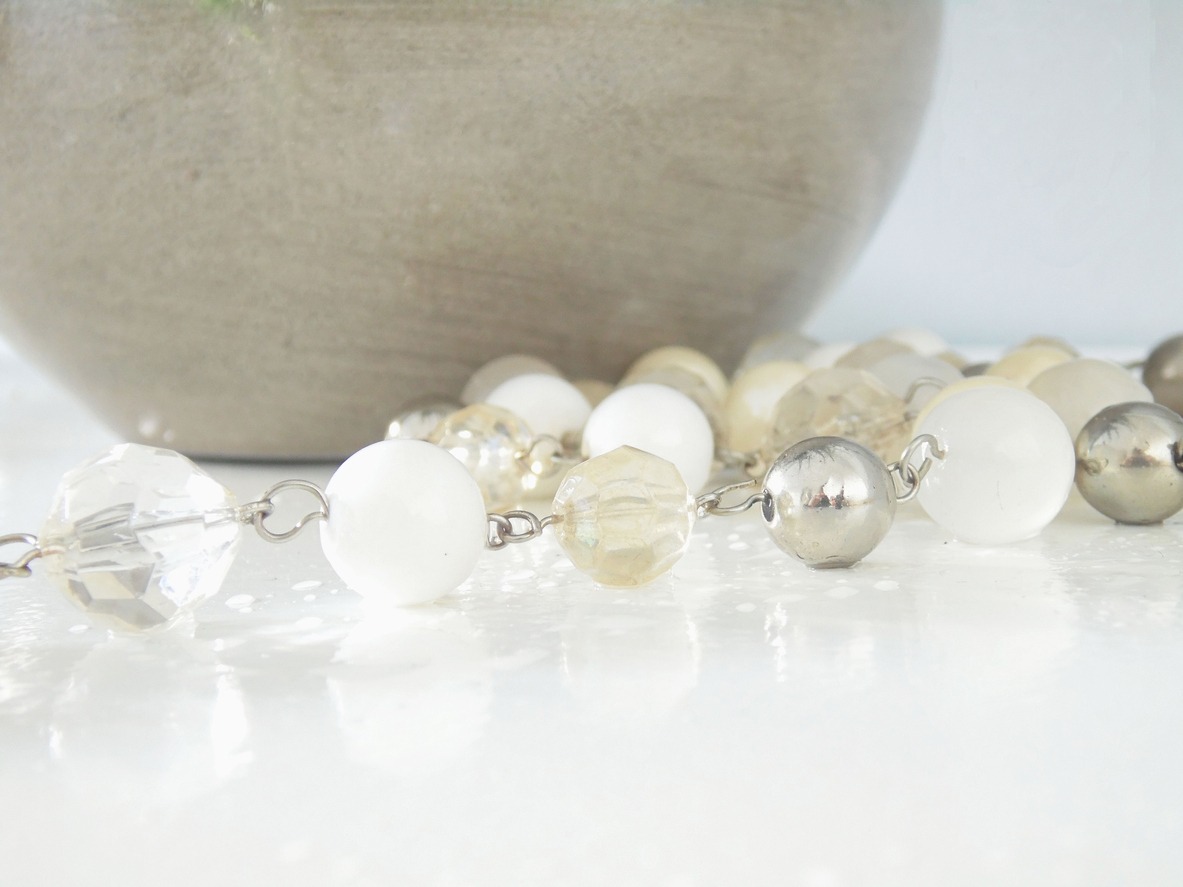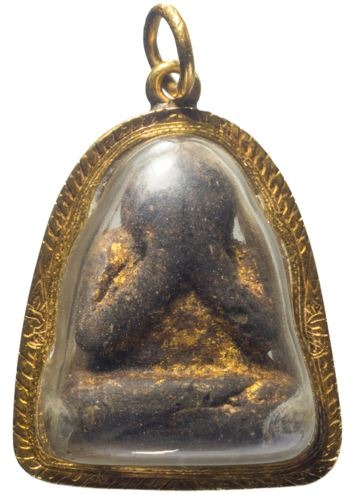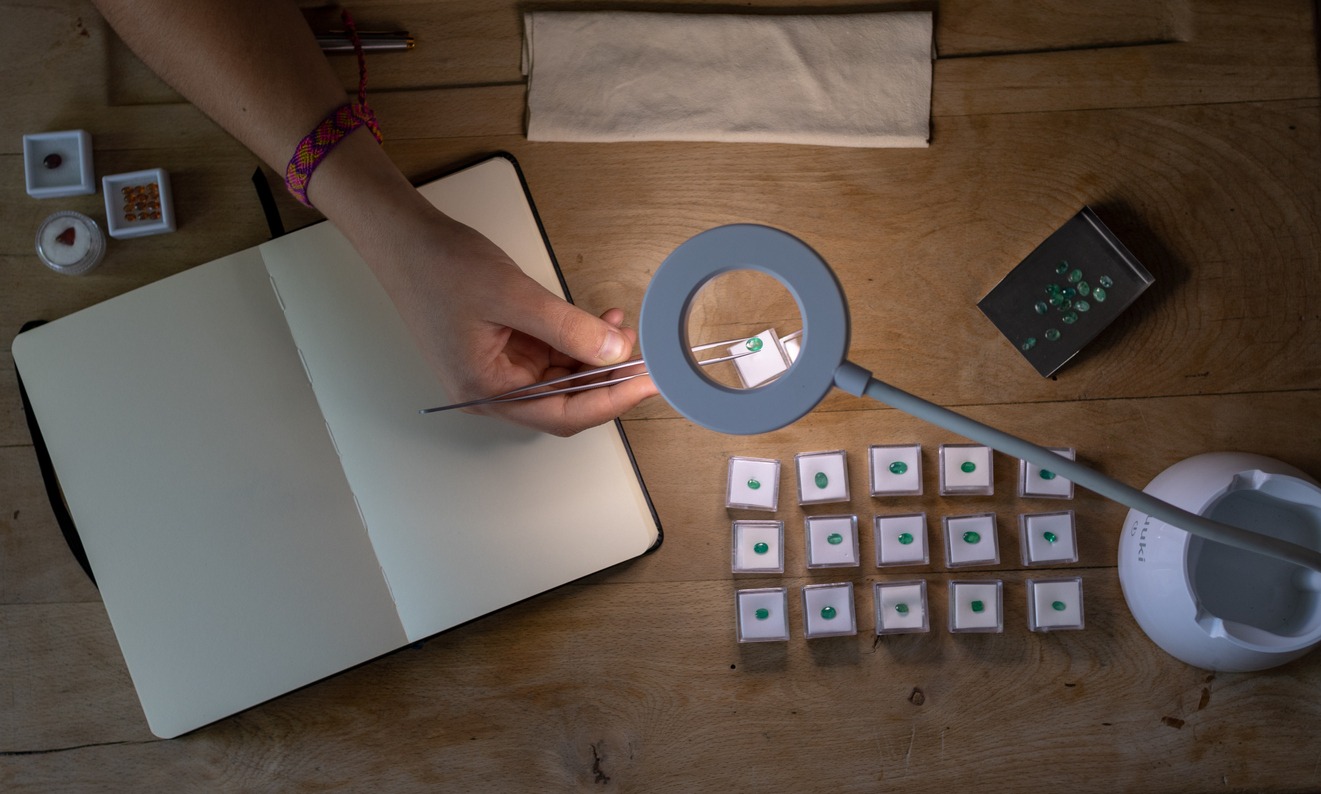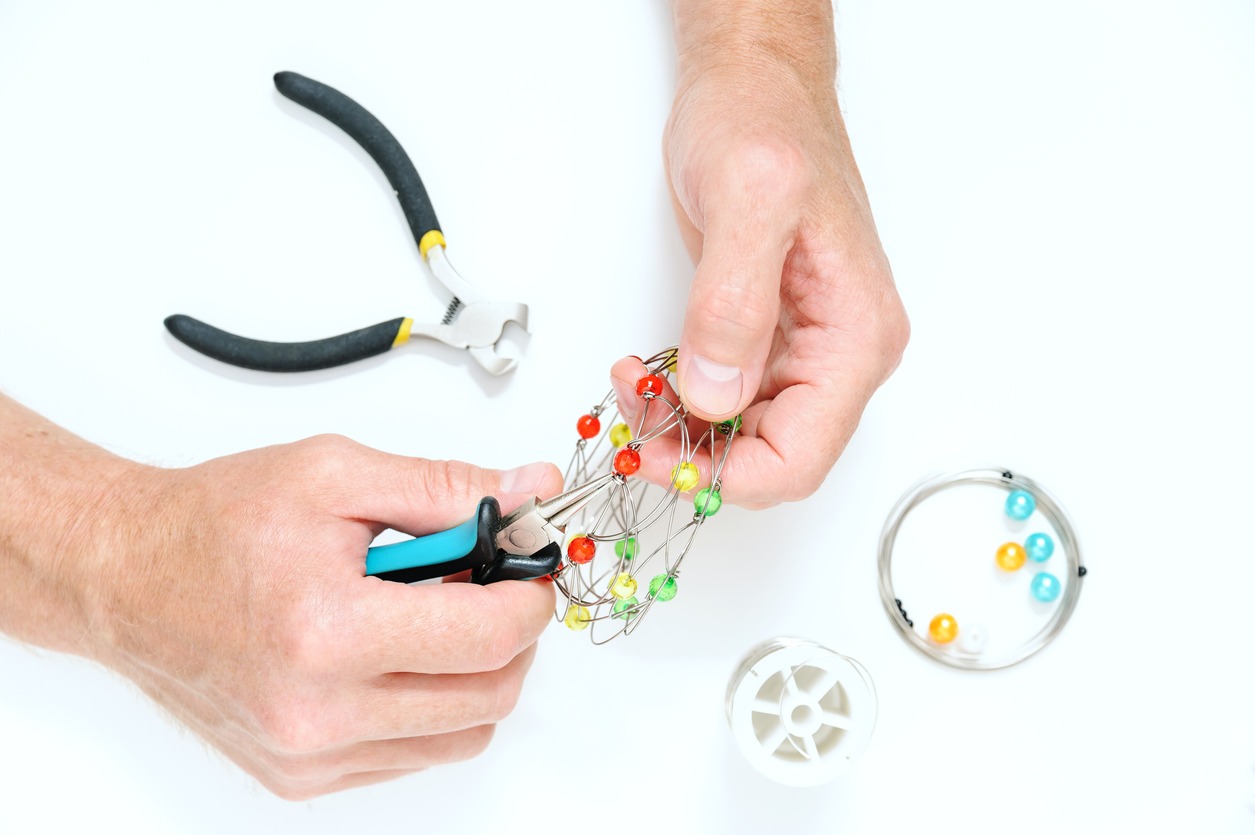There is a long tradition of using jewelry as both ornamentation and symbolism, stretching back thousands of years, and spanning multiple countries. It includes various components, such as beads, wire, jewels, and precious metals. Making jewelry is rewarding since it allows you to put your creativity to use by displaying or wearing your finished pieces. In addition, jewelry making can be a profitable side business. You may start manufacturing jewelry as a pastime or even turn it into a full-time career. Many people are interested in crafting their own jewelry, but they may need help knowing where to begin. In this article, you’ll learn about the many kinds of jewelry and simple techniques for making your own.
Brief Historical Background of Jewelry
It is difficult to conceive of a world without jewelry because it has been worn for so long. A bone necklace dated approximately 25,000 years ago and discovered in Monaco is the earliest known example of jewelry. Between 3000 and 400 BCE, early stone jewelry originated in Iran and the Mediterranean. Numerous amulets made of stone had basic carvings of symbols such as flowers and stars and functioned as offerings to the gods. The ancient Egyptians adorned their tombs and mummies with talismans that featured beautiful gems and symbols etched into stone. As early as 1200 B.C., Greeks adorned themselves with gold and gems to symbolize their prosperity and luxury, frequently as a tribute to the gods.
In 330 A.D., when Emperor Constantine relocated the center of the Byzantine Empire to Constantinople, the city became a center for the arts. It became a melting pot for design and symbolism in the fabrication of beautiful jewelry and the birthplace of the enameling technique of cloisonné. In 476 A.D., after the fall of Rome, many luxuries, such as jewelry, became even scarcer; churches held most of the riches and jewelry. During the Middle Ages, the nobility and churches looked down on commoners who wore jewelry, and the Sumptuary Laws enforced this.
During the Renaissance, jewelry became more accessible to the public, and artists made enormous achievements in developing inventive designs and wearable art. Most modern jewelry adheres to classic forms and styles. New technologies, such as 3D-printed casting and lab-grown diamonds, are reshaping the industry, although traditional methods have remained mostly untouched.
During the Middle Ages, European jewelry styles were increasingly fashionable. As early as 2500 BCE, Islamic and Byzantine influences can be detected in the jewelry of the Germanic tribes of the eastern Mediterranean. During this time, gold jewelry was prevalent. These tribes’ jewelry impacted the later Egyptian and Babylonian styles. The Phoenicians lived from Syria to Spain in the eastern Mediterranean and were the first to utilize gold in jewelry. These merchants introduced a new style to the region that was influential for generations. Also contributing to the worldwide style of jewelry was the art of printing.
Modern fashion trends have resulted in a variety of jewelry designs. In addition to being the era of the first four Hanoverian rulers of Great Britain, the Georgian period in England spanned from 1714 to 1830. During this time, the French and American Revolutions occurred. During this period, Jane Austen and Georgiana, Duchess of Devonshire, were also popular. Even though different jewelry types differed in appearance, several characteristics remained constant.
Different Types of Jewelry
Making jewelry is the art of crafting accessories to beautify the body. There is a wide variety of techniques that may be used, and the materials can be anything from stone to precious metals. Make sure you do your research on the different kinds of jewelry-making before you start.
1. Beaded Jewelry – Beading is the process of creating jewelry from beads by connecting them with a needle, thread, or fine wire. Beads in jewelry are little discs of plastic, glass, gemstone, or wood with a hole drilled through the middle.
2. Wire Jewelry – Wire wrapping is a very old method of creating jewelry; it was used in Iraq 4,300 years ago. Its original purpose was to convey stories, but nowadays, its uses have expanded to include jewelry and three-dimensional art. The method involves joining wire parts together without using solder or heat by wrapping them over one another.
3. Silver and Gold Jewelry- The procedures of silversmithing and goldsmithing involve forming precious metals into jewelry and other small objects by hammering, casting, soldering, chasing, riveting, and embossing, among other techniques.
4. Glass Jewelry – Jewelry components, such as pendants and other small wearables, are often fabricated out of fused glass nowadays. To complete a piece of fused glass, you will need a kiln and a selection of straightforward tools. The capabilities of fused glass jewelry are only limited by one’s imagination due to the variety of glass colors and types available.
5. Metal Clay Jewelry – After being baked in a kiln, the distinctive form of clay used to create jewelry, metal clay, hardens and takes on a more permanent appearance. Before being placed in the kiln, the clay can be easily shaped by hand or using various tools. Beads, pendants, and even full rings can be fashioned out of metal clay, among other things.
Guide to Creating Your Own Jewelry
Getting started in the jewelry industry takes a lot of courage; there are many supplies to acquire, terms to learn, and abilities to hone. Everyone needs to be familiar with these fundamentals of jewelry making before embarking on what will hopefully be a rewarding and entertaining adventure.
1. Choose the kind of jewelry that you want to make.
When creating jewelry at home, you first need to decide which project you want to work on. When making jewelry, one has many options, like casting pendants made of precious metals and fusing glass pendants. Choose one media to focus on first, whether wire wrapping or casting jewelry, and know that you can learn about and experiment with other ways in the future. The knowledge gained from one method will almost certainly be transferable to other procedures of jewelry-making. It will serve as a foundation for further development.
2. Explore your creative side and look for inspiration.
Get inspired! A quick internet search, an in-depth exploration of Pinterest, or some window shopping at local jewelry stores can further prove that the possibilities are virtually endless! It would help if you began by finding some sources of motivation and deciding the kinds of materials you would like to work with, such as glass or metal clay. After that, you can begin designing your project and deciding what materials, tools, and equipment you require.
3. Design your piece.
There are a few things that you must know first if you want to make your own piece of jewelry. First, design is all about finding the right balance. Balance can be symmetrical, asymmetrical, or radial. Symmetrical balance means that all the design parts on one side are the same size. Informal balance is the second type of balance. Balance is important for both the way something looks and how it works. Your design should match the style of the person who will wear it. Make a rough draft on paper before you start working on the actual design if you need help figuring out where to start. Create something new by playing with forms, hues, and mediums that excite you. You can start from scratch or use an existing piece of jewelry as a point of reference. Using this rough draft, calculate how much time, money, and effort will be required to bring your concept to life. Please write down the names of the materials you’ll need next to each design section as you make it.
4. Get the tools and supplies you need.
Once you have a plan, you can start getting the necessary tools and materials. Wire-wrapped jewelry is the easiest kind of jewelry you can make at home. You only need a few simple tools, and you don’t need a kiln. You may get started with basic hand tools like wire cutters and pliers from your home toolbox. However, investing in higher-quality equipment is crucial if you want to take your jewelry creation seriously. One of the most intimidating components of learning a new trade like jewelry making is understanding what supplies you need to get started. For stringing beads, bead weaving, or wire work, tools like wire cutters and numerous forms of pliers are important to have on hand.
1. Wire Cutters are a must-have piece of equipment for a jewelry maker’s kit. You can use these to snip stringing wire, headpins, and eye pins. But you may not need to acquire this tool, as most homes have one in their toolbox.
2. Round Nose Pliers – These are only used in jewelry creation and are not something you’ll find in Dad’s toolbox. The smooth, rounded corners are ideal for making basic wire loops and other shapes with rounded corners. If you arrange your wire around the jaw of a pair of round-nose pliers, you may create a loop of any desired diameter. Place your wire near the handles to make a big loop or at the tips to make a little one. Use a permanent marker to label the pliers so that you can always produce the same size loops for a given task. In this technique, you can reliably position your wire. Once you’re done, you can wipe the pliers off with some rubbing alcohol to get rid of the stain.
3. Chain Nose Pliers – Using regular needle-nose pliers when you really need chain-nose pliers is a real possibility. And they may even be needed in some works. Chain nose pliers are better for picking up jewelry wire than needle nose pliers. Because the serrated surface of nose pliers makes it hard to pick up jewelry wire without damaging it. Similarly, the shorter jaws of chain-nose pliers make them more manageable than longer-jawed needle-nosed pliers. Jump rings are opened and closed with chain nose pliers because of their tapered shape near the tip and ability to fit into tight areas.
4. Flat Nose Pliers – While a pair of flat nose pliers aren’t strictly necessary for working with jewelry wire, they make the job much simpler because of their wide, non-tapered noses. However, if you buy this item, you will still need two pliers: one to form the wire and one to grasp the other end during manipulation. For this task, you can use two sets of flat-nose pliers or a combination of chain-nose and flat-nose pliers.
5. Crimping Tool – On projects where the wire is visible between the beads, some jewelers use flat nose or chain nose pliers to hammer a crimp bead into place. Yet, this is not a suggested practice, as crushing the metal generates an unattractive sharp edge that can cut sensitive skin. Enter—the crimping tool, or crimping pliers, with unique notches in the jaws that slightly flatten and round a crimp bead onto the wire. You can use one notch to crimp and then use a wider notch towards the end of the pliers to form the bead into a circle. The project’s final clasp can also be fastened with this device.
5. Learn some fundamental abilities.
Regardless of whether you intend to work with beads, clay, metal, or jewelry first, you’ll need a few abilities for each job. For example, most projects will need that you know how to properly open and shut a jump ring and make a simple wire loop. Once you have mastered these skills, you may apply them to any project.
6. Become familiar with certain jewelry-related terms.
Ensure that you are aware of your needs before making any purchases. It will save you the time, money, and aggravation of returning and exchanging the wrong things. There are numerous helpful resources, such as this introduction to metal stamping.
7. Prepare your work area.
Prepare a place with plenty of light and a clean table. Since the work involved in producing jewelry is typically done on a much smaller scale, it is important to have plenty of light and, if required, a magnifying glass. Your workbench should be firm so that when you hammer, stamp, and work your jewelry, it doesn’t wobble. You may spend long periods sitting at your bench working as a jeweler. Think about getting a chair with good head and neck support. Ensure your bench peg is at eye level with your seat, so you’re not slouching when working. Sanding, soldering, and polishing require adequate ventilation, protective eyewear, a face mask, and sometimes even fire extinguishers.
8. Start creating.
Once you’ve thought out your design, grab your materials and prepare your workstation; you’re ready to begin working. When you are just starting, you can take a class or engage a private tutor if you want a more dynamic learning environment.
Conclusion
Making jewelry may be a rewarding hobby for people of all ages and economic backgrounds. It takes a lot of perseverance and hard work, but anyone can become successful in the jewelry business. Discover a specialization within the field of jewelry that allows you to thrive. You may make your own jewelry, including necklaces, pendants, bracelets, and earrings, provided you have an eye for design, some time, and a modest or even small budget. Finding your niche in the spectacular jewelry industry may be accomplished through various methods. If executed well, it can yield substantial financial rewards. If you’re serious about making a living at it, you’ll need to invest in the right training and equipment.
Spending time doing something you enjoy, and talking to others about it, is a great way to expand your social circle. One of the best things about crafting jewelry is becoming a part of a bigger community. People of the artistic bent may be found in every corner of the world, and they like crafting and trading jewelry with one another. When you display your jewelry online, you can generate sales, earn extra money through art trades, meet new people, and have a great time doing both. Participating in workshops is a great way to meet individuals in your immediate area and joining online art communities is a great way to connect with creatives worldwide.
Feel free to try a certain talent because you think it looks or sounds tough. I love showing my friends and family how simple it is to make their own unique jewelry using metal stamping tools. Many people are scared off by the concept, but when given a chance, they discover how much they are capable of. You should allow yourself a variety of jewelry or a small selection of stones. Play around with your stuff, try new things, and see how you like them! Experiment with different materials and see what happens.
